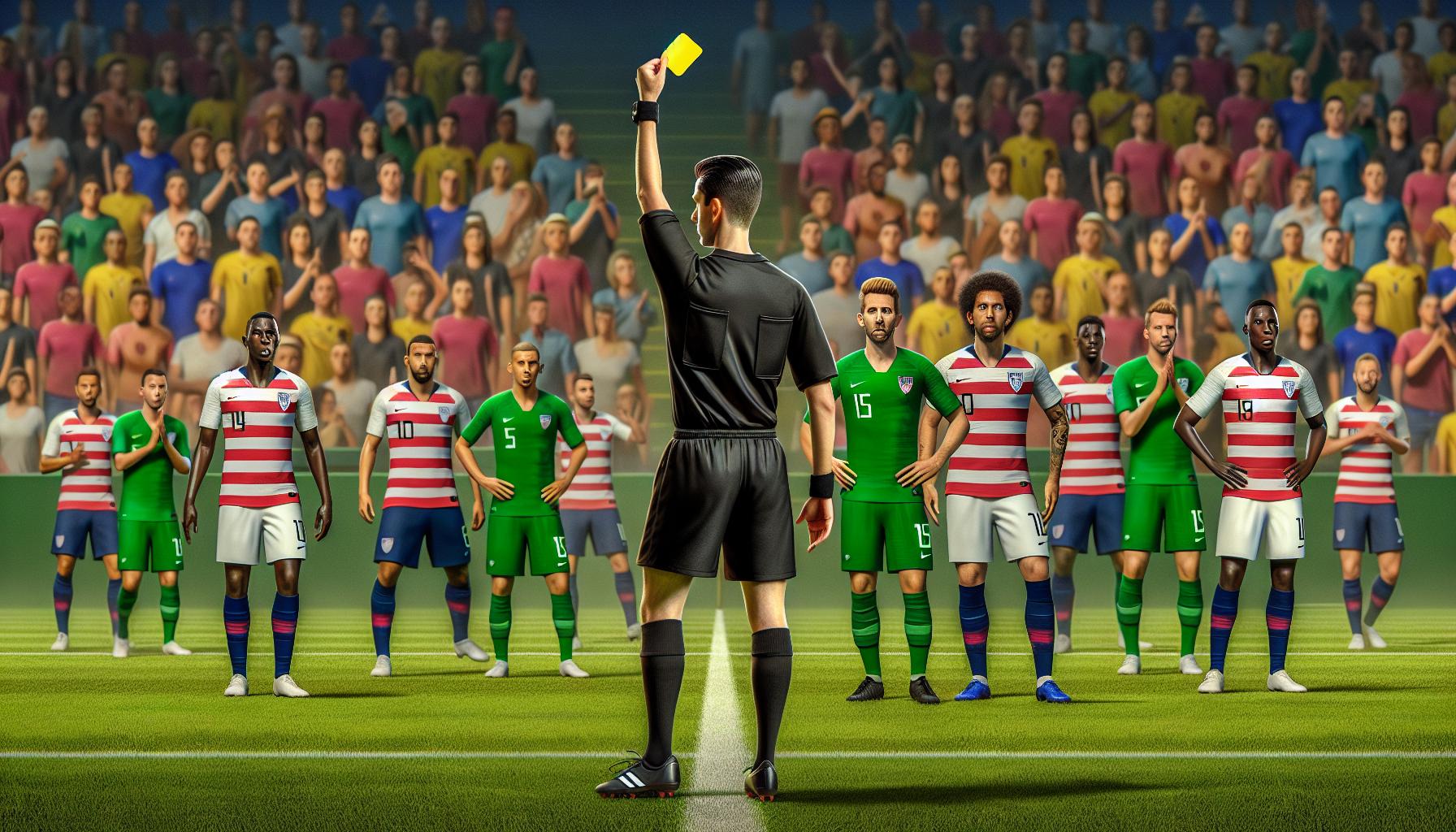In soccer, yellow cards play a crucial role in maintaining the game’s integrity. They serve as warnings for players who commit fouls or exhibit unsportsmanlike behavior. Understanding how many yellow cards a player can receive is essential for both athletes and fans alike.
Typically, accumulating two yellow cards in a single match results in a red card, leading to the player’s ejection from the game. Over a season, the number of yellow cards a player can earn varies depending on league rules. Coaches and players must navigate these limits to avoid suspensions and ensure fair play. Exploring the regulations surrounding yellow cards provides deeper insight into the strategic aspects of soccer.
Understanding Yellow Cards in Soccer
Yellow cards serve as official warnings for players committing fouls or displaying unsportsmanlike behavior during a match. They help referees maintain order and ensure fair play on the field.
Reasons for Receiving a Yellow Card
Players receive yellow cards for various infractions, including:
- Minor fouls: Tripping, pushing, or holding an opponent.
- Unsportsmanlike behavior: Delaying the game, dissent towards referees, or offensive gestures.
- Reckless challenges: Tackles made without regard for player safety.
- Repeated offenses: Accumulating multiple minor fouls within a short period.
Accumulation and Consequences
A player accumulating two yellow cards in a single match receives a red card, resulting in ejection from the game. Over a season, yellow card limits vary by league:
| League | Season Yellow Card Limit | Consequence |
|---|---|---|
| English Premier | 5 | 1-match suspension |
| La Liga | 10 | 1-match suspension |
| Bundesliga | 10 | 2-match suspension |
| MLS | 8 | 1-match suspension |
Impact on Team Strategy
Teams monitor players’ yellow card counts to avoid suspensions. Coaches may adjust player positions or substitute key players to manage disciplinary records. Understanding league-specific rules is crucial for maintaining team integrity and competitiveness throughout the season.
Enforcement and Referee Discretion
Referees exercise discretion when issuing yellow cards, considering the severity and context of each incident. Consistent enforcement of rules ensures that all players adhere to the same standards, promoting a fair and competitive environment.
Rules Governing Yellow Cards

Yellow cards enforce disciplinary actions in soccer by identifying rule violations. They ensure fair play and maintain the game’s integrity.
Offenses Leading to Yellow Cards
Referees issue yellow cards for various infractions, including:
- Minor fouls: Tripping, pushing, or holding opponents.
- Unsportsmanlike behavior: Dissent, delaying the game, or leaving the field without permission.
- Reckless challenges: Dangerous tackles or attempts to intimidate players.
- Repeated offenses: Multiple minor fouls by the same player in a match.
Each offense aligns with the Laws of the Game, providing consistency across matches and leagues.
Accumulation of Yellow Cards
Players accumulate yellow cards over the season, leading to suspensions based on league rules. For example:
| League | Yellow Card Limit | Suspension Consequence |
|---|---|---|
| English Premier League | 5 | 1-match suspension |
| La Liga | 3 | 1-match suspension |
| Bundesliga | 4 | 1-match suspension |
| MLS | 4 | 1-match suspension |
Accumulation limits vary by league, requiring players to monitor their card counts to avoid missing matches.
Consequences of Receiving Multiple Yellow Cards
Accumulating multiple yellow cards in soccer results in significant consequences that affect both players and their teams.
Suspensions and Penalties
Yellow card accumulations trigger suspensions based on league-specific regulations. The table below outlines suspension thresholds across major leagues:
| League | Yellow Card Limit | Suspension Duration |
|---|---|---|
| English Premier League | 5 | 1 match |
| La Liga | 3 | 1 match |
| Bundesliga | 4 | 1 match |
| Major League Soccer | 4 | 1 match |
Upon reaching the limit, players receive a one-match suspension. Exceeding these limits can lead to extended suspensions, depending on the league’s disciplinary guidelines.
Impact on Team and Player
Multiple yellow cards limit a team’s available squad members, forcing coaches to adjust strategies and substitute key players. Suspended players miss crucial matches, potentially weakening the team’s performance. For players, frequent yellow cards damage their reputation, resulting in reduced playing time and increased attention from referees and opponents.
Comparing Yellow Card Policies Across Leagues
Different soccer leagues implement varying yellow card accumulation policies to maintain discipline and fairness. Understanding these policies is crucial for players, coaches, and teams to navigate suspensions and manage player availability effectively.
Yellow Card Limits and Suspensions
| League | Yellow Card Limit | Suspension Duration |
|---|---|---|
| English Premier League (EPL) | 5 yellow cards | 1 match suspension after reaching the limit |
| La Liga | 3 yellow cards | 1 match suspension upon limit |
| Bundesliga | 4 yellow cards | 1 match suspension after reaching the limit |
| Major League Soccer (MLS) | 5 yellow cards | 1 match suspension after reaching the limit |
| Serie A (Italy) | 4 yellow cards | 1 match suspension upon limit |
| Ligue 1 (France) | 2 yellow cards | 1 match suspension upon limit |
| Brasileirao (Brazil) | 5 yellow cards | 1 match suspension after reaching the limit |
Policy Variations and Implications
Leagues differ in the number of yellow cards allowed before a suspension is enforced. For instance, Ligue 1 imposes a suspension after two yellow cards, which is stricter compared to the EPL’s five-card limit. These differences affect player behavior and team strategies, as stricter leagues may encourage more cautious play to avoid early suspensions.
Additionally, some leagues reset yellow card counts after certain periods or tournaments, while others carry them over the entire season. This variation requires teams to monitor their players’ card counts meticulously to prevent unexpected suspensions that could impact crucial matches.
Impact on Team Management
Teams in leagues with lower yellow card thresholds must adopt tighter disciplinary measures and emphasize fair play to maintain player availability. Conversely, leagues with higher thresholds offer more flexibility but may experience higher instances of cautionary play. Coaches adjust their tactics based on these regulations to optimize team performance and minimize suspension risks.
Understanding these policies enables teams to better manage player conduct, navigate suspensions, and maintain competitiveness throughout the season.
Strategies to Minimize Yellow Card Risks
Reducing yellow card incidents ensures player availability and strengthens team performance. Implementing effective strategies fosters discipline and fair play on the field.
Playing Fair
Adhering to fair play principles decreases the likelihood of receiving yellow cards. Key approaches include:
- Respect Opponents: Avoid aggressive tackles and personal confrontations.
- Control Physicality: Execute challenges cleanly without excessive force.
- Anticipate the Game: Read opponents’ movements to prevent unnecessary fouls.
- Maintain Composure: Manage emotions to prevent retaliatory actions.
- Understand Rules: Familiarize with game regulations to avoid inadvertent infractions.
- Use Appropriate Signals: Employ non-verbal cues to clarify intentions during play.
- Stay Respectful: Address referees courteously to build rapport.
- Clarify Intentions: Inform referees if a foul was accidental to reduce penalties.
- Avoid Confrontation: Prevent escalation by maintaining calm interactions.
- Seek Feedback: Learn from referees’ decisions to improve future conduct.
Conclusion
Managing yellow cards is crucial for maintaining a team’s strength and competitiveness throughout the season. Understanding league-specific regulations helps players and coaches make informed decisions on the field.
By adopting disciplined play and focusing on fair conduct, teams can minimize suspensions and ensure key players remain available. This strategic approach not only promotes sportsmanship but also enhances overall team performance in the long run.

